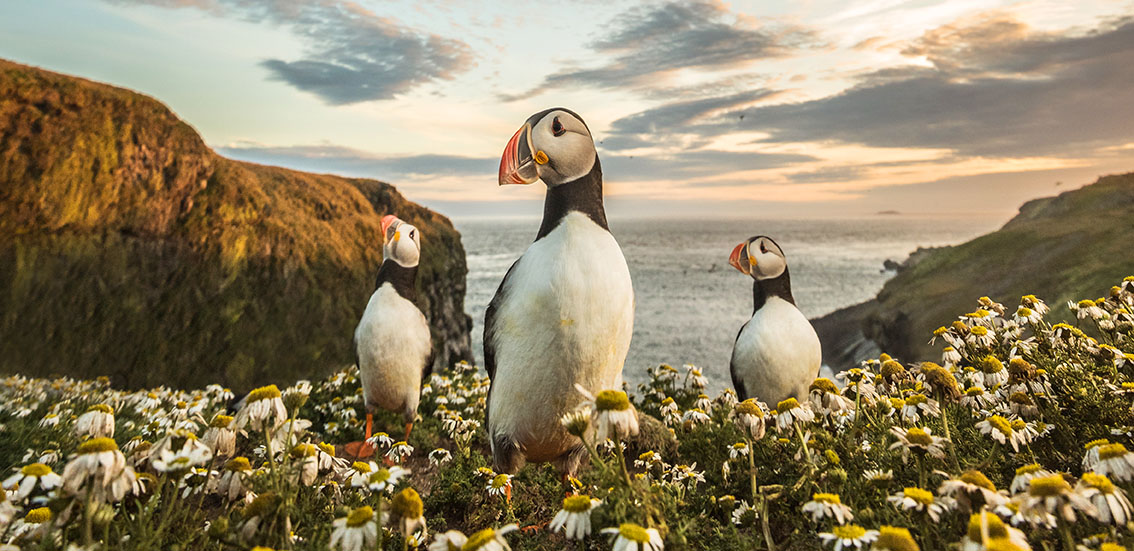Matthew Cattell’s amazing image, entitled ‘Skomer Puffins’ received commended in the Landscape Photographer of the Year competition 2017. It was taken on the Welsh island of Scomer, home to the largest Atlantic puffin colony in southern Britain. Matthew talks about his experience of this unique place, and how he captured such wonderful images.

“Skomer is a small island on the Pembrokshire Coast,” explains Matthew. “It takes around an hour to walk its perimeter and it’s packed with an abundance of wildlife.” Out of the many species of birds and wildlife on the island, Matthew considers the puffins, with their comical expressions, to be the main draw for visitors. They can be found at a number of locations on the island but the Wick, a sheer cliff carved with ledges that are ideally suited to nesting seabirds, has the largest colony, and is therefore a great place for photographing.

“You can visit the island as a day visitor but if you’re lucky and book well in advance it is also possible to stay overnight,” says Matthew. “This is when the island truly comes to life.”
He considers that staying the night has been a key factor in getting the best opportunities to photograph the birds. “Throughout the day puffins and other seabirds raft on the surface of the sea before returning to these cliffs in huge numbers as the day wanes,” he explains. “By booking ahead and staying on the Island overnight you are given the opportunity to photograph these birds during the golden hour.”

On the question of what equipment to use, Matthew thinks that the obvious choice when photographing seabirds is to use a telephoto lens and fill the frame with your subject, however he considers that the resulting photographs don’t always tell the whole story of life on a seabird colony. “Don’t be afraid to break out your wide angle lens and capture the wider scene,” he says. “With patience and a bit of luck you can get some very rewarding shots.” Matthew’s photograph entitled ‘Skomer Puffins’ was taken on a wide angle lens at 16mm.”

The birds on Skomer are very used to people and it’s easy to get close to them, but Matthew reminds us that visitors – including photographers – must be considerate. “It is very important to remember that the birds’ welfare must come first,” he says. “Stay on the path and don’t spend too long photographing a particular bird, especially if it has a beak full of sand eels – they may have a young chick who needs feeding.”
‘Skomer Puffins’ can be viewed along with other Landscape Photographer of the Year 2017 competition winners and commendations in an exhibition on Waterloo Station, London, until 4th of February 2018. The show later travels to other stations throughout Britain. See the LPOTY site, for the latest updates.

